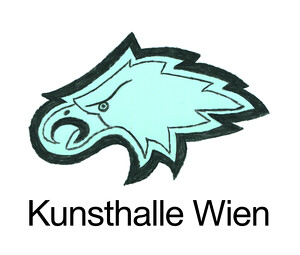BIG OBJECTS NOT ALWAYS SILENT
July 15–November 13, 2016
Museumsquartier, Museumsplatz 1
1070 Vienna
Austria
Hours: Tuesday–Sunday 10am–6pm,
Thursday 10am–8pm
BIG OBJECTS NOT ALWAYS SILENT is the telling title for Nathalie Du Pasquier’s first solo-exhibition in Austria. Covering an artistic career spanning 35 years, the exhibition brings together her paintings and patterns, sculptures and designs, constructions, carpets, and ceramics to create a world of different cities, of architectures and forms that fall under one roof to build a new understanding of how her practice has evolved.
The exhibition enters new terrain to see and understand how Du Pasquier considers and plays with complex arrangements of forms, the expressive and emotive relations between things, and the space between objects and their representation. Working between the fields of fine arts, design and craft, she repeatedly breaks the “rules” and confines of genre. Whether her still lifes take shape as paintings, or as sculptural objects, design objects, furniture, carpets, or models, “they portray a relationship between forms,” Du Pasquier explains. For her the decorated surface offers incredible potential for illusion, allowing one to fall into another dimension.
Self-taught, Nathalie Du Pasquier began her career in textile design. At the age of 23, she was the youngest founding member of Memphis, the influential Milanese design and architecture collective launched under the direction of Ettore Sottsass in 1980. Since 1987 however, her main focus and passion has been to paint. Although she primarily sees herself as a visual artist, her measured approach to formal attributions lies not only with regard to her own work, but also to hierarchies within artistic fields. Regardless of category, Nathalie Du Pasquier’s works always bear her distinct and unmistakable hallmark. Her travels to the African continent during her early youth, the ornamentation of the Wiener Werkstätte, Le Corbusier’s and Amédée Ozenfant’s artistic production, and Novecento painting by Giorgio de Chirico and Giorgio Morandi all had an impact on her creative approach. When asked about her method and the traces of the diverse influences in her work she explains: “adventures are like that: you follow tracks, you don’t follow ideologies.”
BIG OBJECTS NOT ALWAYS SILENT averts a chronological framework and instead opts for an intuitive choreography, a constructed environment similar to the way in which the artist creates her painterly or sculptural compositions, a methodical yet free, lyrical procedure. As conceived by Du Pasquier, pieces from decidedly different periods of artistic production are presented side by side, portraying the natural evolution and exchange between design and painting, as well as illustrating recurring elements and processes of making that ultimately underscore all of her oeuvre.
On entering the exhibition the horizon of a shelf stretches out before you acting as both a stylistic prelude of influences, and as a self-portrait of the artist—an eclectic, aesthetic and material biography of her intellectual world.
The division of different rooms, considered as houses or cities of intrigue, constitute the central exhibition space. In each these rooms creative phases are presented in a wild jumble of chronologies, materials, and motifs. The dynamics of geometry unfold on perceiving the interrelations between the items: sculptural objects that resemble architectonic models are paired with paintings of sculptures; coloured elements stand out axonometrically in metaphysical, monochrome landscapes. Flat, two-dimensional objects cut out of painted paper or cardboard alternate with small, decorative three-dimensional constructions.
The exhibition at Kunsthalle Wien is the first extensive solo show dedicated to Nathalie Du Pasquier at an international institution, and is thus a long overdue homage to her oeuvre in all its genre-spanning complexity.
Curator: Luca Lo Pinto
Publication: A two-volume publication, designed by Tank Boys and published by Sternberg Press, is to appear on the occasion of the exhibition. It consists of an artist’s book by Nathalie Du Pasquier and another volume with a conversation with the curator, short essays by Andrew Ayers, Dafne Boggeri, Barbara Radice, Stephen Piccolo, Lodovico Pignatti Morano and an extensive documentation of the exhibition.
Stay connected:
Please check our website for regular updates on our program.
For further information please contact: Katharina Murschetz
T +43 (0) 1 5 21 89 1221 / presse [at] kunsthallewien.at


